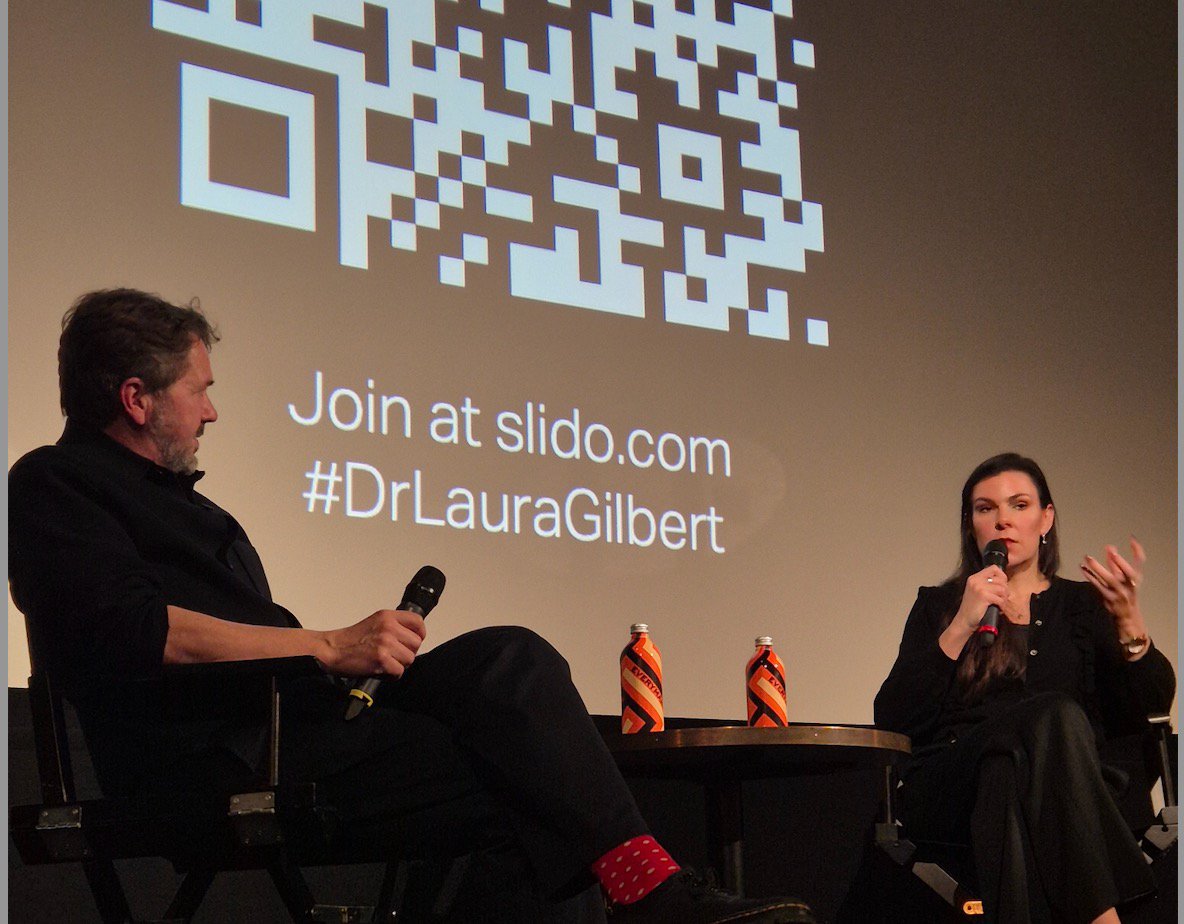Dr Laura Gilbert ‘With The Team’: Why Purpose and People Must Power Our Approach to AI

“You can’t predict the future – you can just be prepared for it.”
That was one of the many takeaways from our recent Talk with the Team with Dr Laura Gilbert CBE, Director of Data Science at 10 Downing Street and Chief Analyst for the UK Government.
In a conversation that was equal parts pragmatic and inspiring, Laura demystified the complexities of AI, and reminded us that behind every algorithm and dataset, there’s a deeply human story to be told.

Bridging the world of data, AI, and people
As Mark Hauser, our Applied Behavioural Scientist, put it:
“I loved the way she bridged the world of data and AI with impacting people — and with those people being the core focus.”
That human-centred lens ran throughout the session. Laura’s humility and openness about “not knowing what the future holds” struck a chord with many. She referenced research by Philip Tetlock on the fallibility of predictions, challenging us to think about AI not as a crystal ball, but as a tool for preparedness and problem-solving.
As Mark reflected:
“If someone had asked five years ago which jobs would be at risk, we’d unlikely have said software engineers. Yet the coding ability of today’s AI is such that we can now build software without any coding training — which is nuts!”

From fear to hope — AI as a force for good
For many of us, the session helped shift our perspective on AI from one of anxiety to one of opportunity.
Laura Searle, our Senior Designer, said:
It’s made me less fearful of AI, and given me an interesting perspective around how it can actually solve real-world problems. It’s inspiring, and has me thinking about the potential and possibility of it.
That optimism wasn’t naïve; it was grounded in purpose. Laura Gilbert shared examples of how AI is already being used to detect dangers in data — from reducing medical overprescription to improving patient outcomes — proof that when applied thoughtfully, technology can make a tangible difference to society.
This was a key takeaway for our Producer, Kat Anastasiou:
The part that resonated the most with me was the examples of how the AI code could help people in a way that brought so much value, without risking jobs. A reminder that AI can be used for good and that’s where we should focus.

Building the right culture for AI
A recurring theme was culture: how organisations can build environments where AI isn’t feared, but explored.
Jennifer Robinson, our Employee Engagement Consultant, captured it perfectly:
“‘Maximising AI culture means you need to be a learning culture in the first place. Which means allowing employees to explore and be curious… But most businesses are productivity-focused, so that protected space and time is the first thing to go. Yet their future success will be banking on it.”
Laura’s advice on practical adoption also resonated across the team. Sally Tarbit, our Director, highlighted:
“You don’t have to train everyone. Pick off the early adopters and let them be your ambassadors… and it’s ok if not everyone comes on board.”
Cliff Ettridge, our Director, agreed — noting that for organisations upskilling with AI, the first thing to do is start.
“Pick up the tools and experiment,” he said. “And focus on the 16% of early adopters who love this stuff and get them to extol the virtues of AI to the others.”

The power of purpose and clarity
Across every reflection, one principle kept resurfacing: clarity of intent. Elena Mosley, our Operations Director, summarised this beautifully:
“Clarity is essential to use AI well. Being clear of your intent is important to get the best result.”
Whether you’re developing an AI strategy or using ChatGPT to spark creativity, that clarity — knowing why you’re doing something, not just how — is what determines whether the outcome is meaningful.
Making the complex accessible
Laura’s ability to make a complex and abstract topic feel relevant was another powerful takeaway.
“She made a potentially complex and abstract topic incredibly accessible and engaging,” said Sally Tarbit. “And purposeful in the sense that she’s leveraging her skills and position to improve outcomes for people and society.”
It’s that blend of accessibility and purpose that makes Laura’s work — and her message — so resonant. Her realism was refreshing too. As Laura Searle noted,
“When she said, ‘You expect to put this in front of someone and they say Hooray!… but they don’t,’ we could all relate. You can’t predict the outcome — and that’s okay.”
Because the course of AI and technological development is, for the most part, unpredictable. And I think Covid has shown us that much of life is, too.
Final thoughts
The genie, as Cliff put it, “is very much out of the lamp.” But what this conversation reminded us is that the real magic lies not in the technology itself, but in how we, as people, choose to use it.
Dr Laura Gilbert left us with a simple, powerful challenge: to approach AI with clarity, curiosity, and compassion. To prepare, not predict. And to remember that the future of AI isn’t written by machines — it’s shaped by us.
Shane Lowes, our Senior Artworker, puts this call to action perfectly:
Just keep playing with the tools and don’t get too embedded with one way of using AI, because things are changing on a daily basis.





